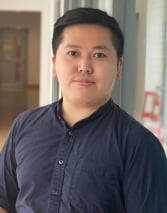Prof SO Kam Hei Karl
 Research Assistant Professor
Research Assistant Professor
B.Sc., M.Phil., Ph.D.
Telephone: 3943 0416
Email: This email address is being protected from spambots. You need JavaScript enabled to view it.
Address:
608A, Lo Kwee-Seong Integrated Biomedical Sciences Building, Area 39, CUHK
ORCID: https://orcid.org/0000-0002-3154-2940
Google Scholar: https://scholar.google.com/citations?user=FCaU-PoAAAAJ&hl=en
Biography
Prof. SO Kam Hei Karl (蘇錦熙)obtained his bachelor degree in biochemistry in The University of Hong Kong (HKU). Then he pursued master and doctoral degrees in Department of Obstetrics & Gynaecology, HKU, where he received academic training in developmental genetics and generation of transgenic mice. He was a post-doctoral fellow in Department of Chemical Pathology, and Department of Orthopaedics & Traumatology in CUHK. Prior to joining CUHK again, he was Research Officer in School of Biomedical Sciences in HKU.
Prof. So’s research interest focused on molecular mechanisms of transcriptional regulation and functional genomics in mammalian development and human congenital disorders. He is interested in studying mechanisms of transcription regulation during craniofacial development, including transcription factors (TFs), non-coding RNAs (ncRNAs), enhancers and RNA binding proteins (RBPs) using multi-omics and next-generation sequencing approaches in stem cells and organoids. Multiple projects are available under this theme:
- Using functional genomics approach to identify genetic factors for congenital craniofacial malformations
- The roles of Irx3/Irx5 genes in craniofacial myogenic development and function
- The roles of Irx3/Irx5 genes and their gene regulatory network in neural induction
- Study of neurogenic placode formation stages and gene regulatory networks using single-cell RNA-seq and organoid culture
- Zhou, J., So, K.#, Sun, H., & Wang, H. (2019). Elevated H3K27ac in aged skeletal muscle leads to increase in extracellular matrix and fibrogenic conversion of muscle satellite cells. Aging Cell, 18(5), e12996.
- So, K., Peng, X., Sun, H., & Wang, H. (2017). Whole genome Chromatin IP-sequencing (ChIP-seq) in Skeletal Muscle Cells. Methods Mol Biol., 1688, 15-25.
- Peng, X., So, K.#, He, L., Zhao, Y., Zhou, J., Li, Y., Xu, B., Zhang, S., Yao, H., Hu, P., Sun, H., & Wang, H. (2017). MyoD- and FoxO3-mediated hotspot interaction orchestrates super-enhancer activity during myogenic differentiation. Nucleic Acids Res., 45(15), 8785-8805.
- Chen, X., He, L., Zhao, Y., Li, Y., Zhang, Z., Sun, K., So, K., Chen, F., Zhou, L., Lu, L., Wang, L., Zhu, X., Bao, X., Esteban, M.A., Nakagawa, S., Prasanth, K.V., Wu, Z., Hao, S., & Wang, H. (2017). Malat1 regulates myogenic differentiation and muscle regeneration through modulating MyoD transcriptional activity. Cell Discov., 3(17002).
- Kottawatta, K., So, K., Kodithuwakku, S., Ng, E., Yeung, W., & Lee, K. (2015). MicroRNA-212 Regulates the Expression of Olfactomedin 1 and C-Terminal Binding Protein 1 in Human Endometrial Epithelial Cells to Enhance Spheroid Attachment In Vitro. Biol. Reprod., 93(5).
- So, K., Kodithuwakku, S., Kottawatta, K., Li, R., Chiu, C., Cheung, A., Ng, E., Yeung, W., & Lee, K. (2015). Human chorionic gonadotropin (hCG) stimulates spheroids attachment onto Fallopian tubal epithelial cells through hCG receptor mediated Mitogen activated protein kinase (MAPK) pathway and down-regulation of Olfactomedin-1 expression. Fertil Steril., 104(2).
#Co-first author
